Rotkohl (German Red Cabbage)
This post may contain affiliate links. See my disclosure policy.
A quintessential and popular German side dish, Rotkohl (braised German red cabbage) is the perfect accompaniment to your Sunday roast, beef rouladen, brats and more! This traditional Rotkohl recipe is the way my Mutti and Oma made it and is easy to prepare, can be made in advance, and can even be frozen!
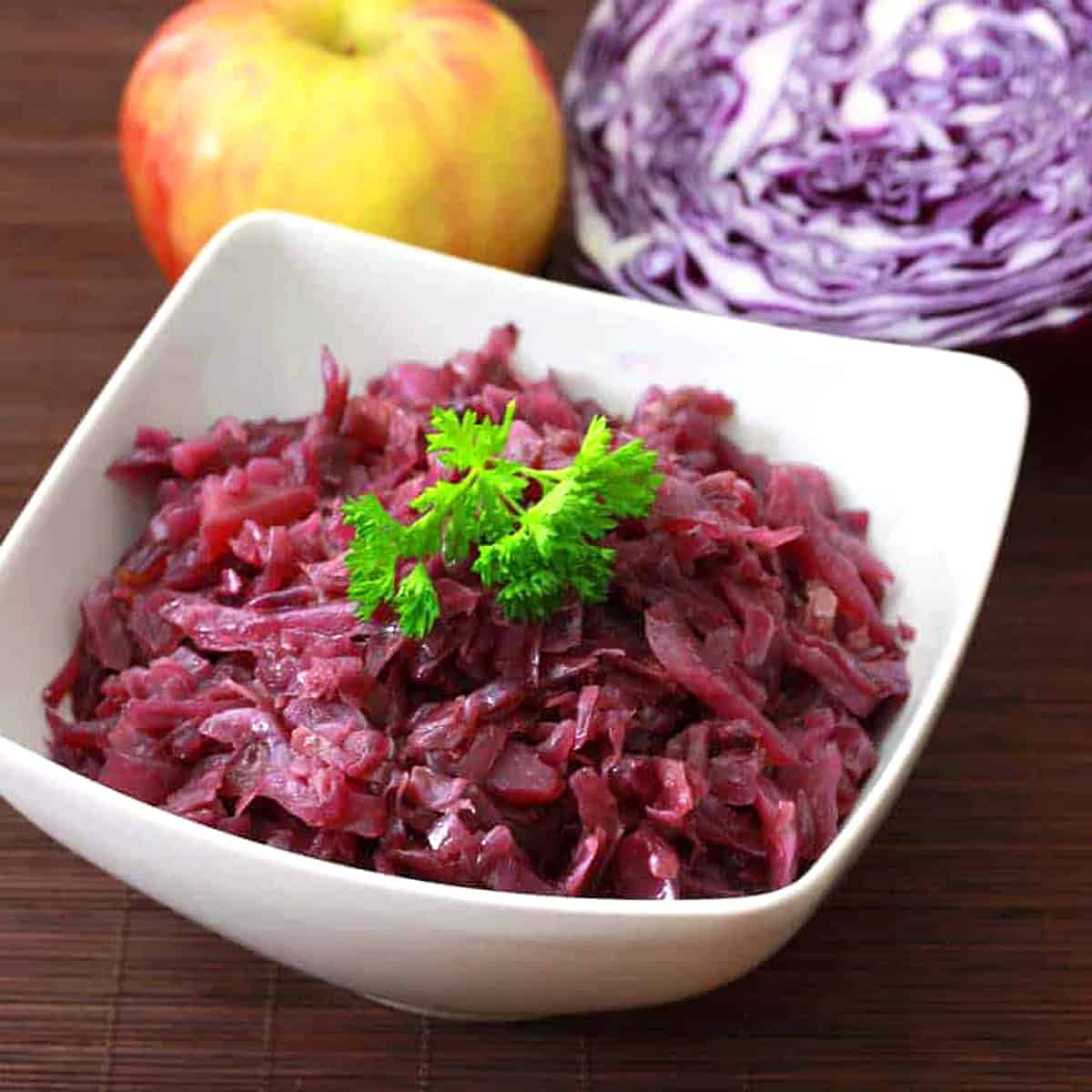
What is Rotkohl?
Known as Rotkohl, Blaukohl or Blaukraut in Germany, depending on the region, this braised red cabbage is a staple side dish that is served throughout Germany. It has a distinct sweet and sour flavor profile achieved by braising the red cabbage with apples, vinegar, and spices. A traditional accompaniment for beef dishes in particular, I grew up in Germany enjoying Rotkohl on a regular basis served with our Sunday roasts, Sauerbraten, and Rouladen.
This sweet and sour red cabbage has been around for, well, seemingly forever. And that’s how it usually works, doesn’t it? Great dishes stand the test of time. And Rotkohl takes the humble red cabbage and transforms it into something wonderful. If you’ve traveled to Germany or have sampled traditional German food, you’re likely familiar with Rotkohl. And this authentic German red cabbage recipe will transport you back to your favorite German dinner tables with memories of your favorite German meals.
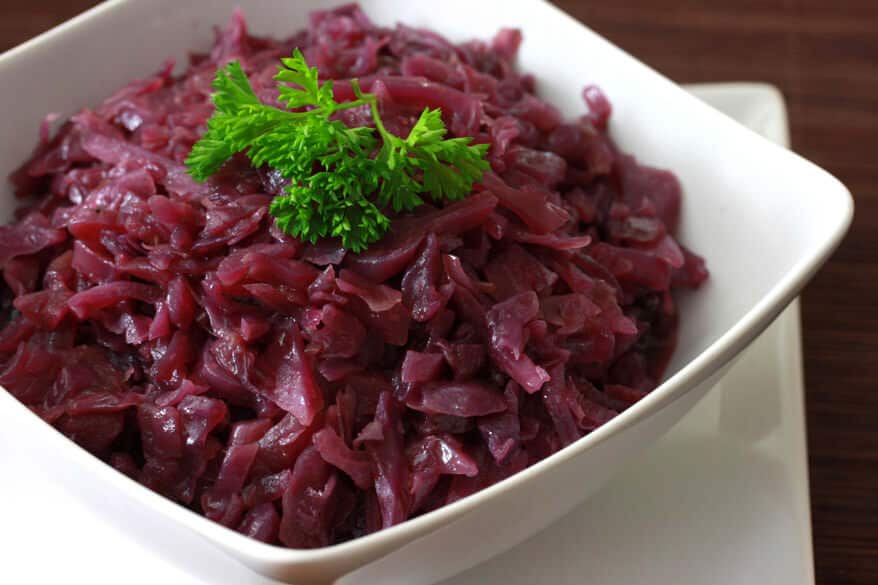
Rotkohl Ingredients
Butter, apples, vinegar, red currant jam, bay leaves, cloves and juniper berries are some of the ingredients that mingle together to create this delicious braised sweet and sour red cabbage. Just be sure to make time for the slow cooking process. It’s that long simmering process that’s key to the final outcome. The other key is to be sure to include all of the ingredients called for, including the spices, in order to achieve that authentic German Rotkohl flavor.
This traditional Rotkohl recipe is simple to prepare and can slowly cook with minimal attention while you’re preparing the other dishes or going about your daily business. It’s a great make-ahead dish because the flavor is even better the next day. Feel free to double or triple the batch because this sweet and sour cabbage also freezes well. Simply let it thaw and gently reheat it on the stovetop or in the microwave.
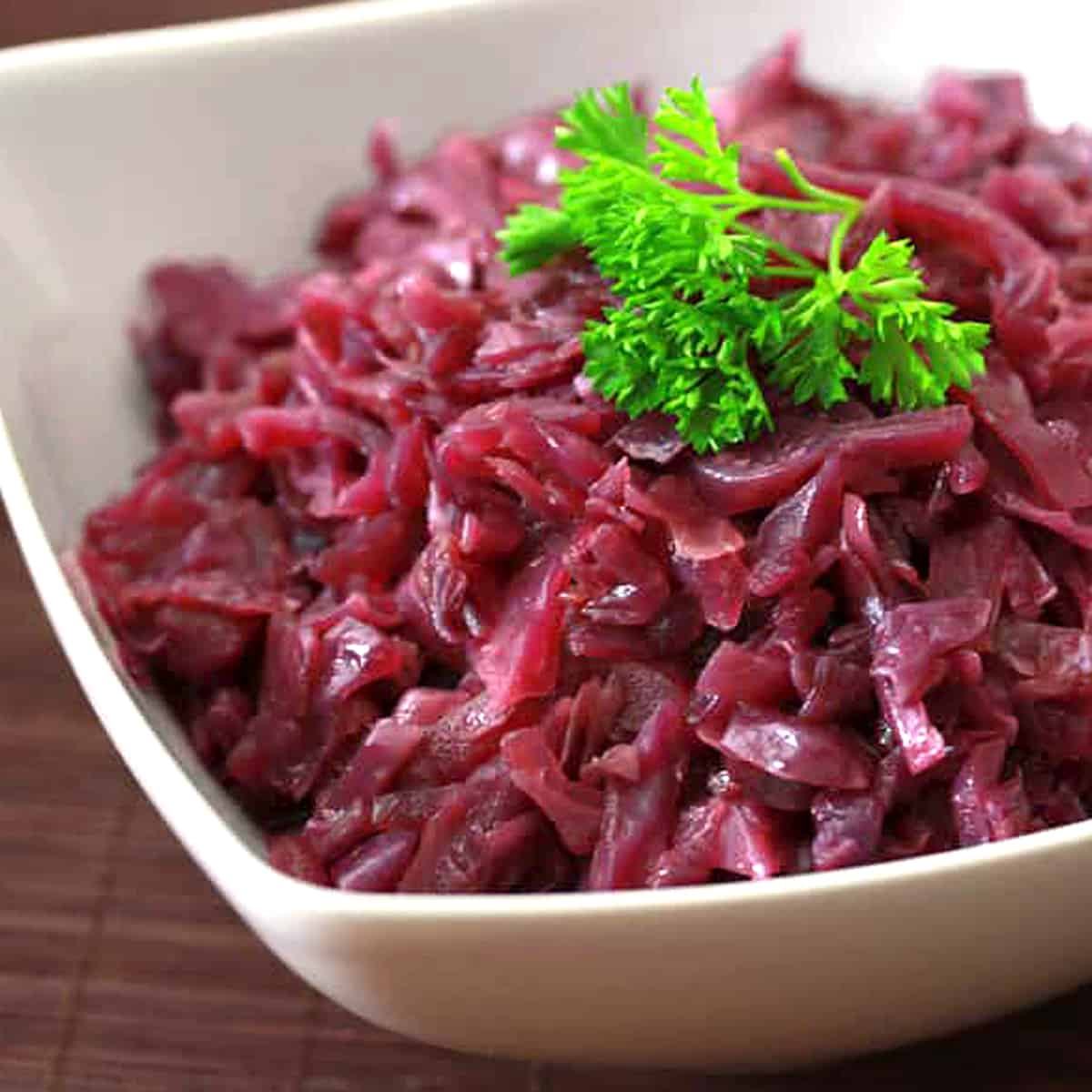
Rotkohl Recipe
Let’s get started!
Finely chop the red cabbage. Achieving exact uniformity isn’t necessary so you can do this either by hand or with a mandolin or food processor.
In a Dutch oven over medium-high heat, melt the butter and cook the onions until lightly caramelized, 7-10 minutes.
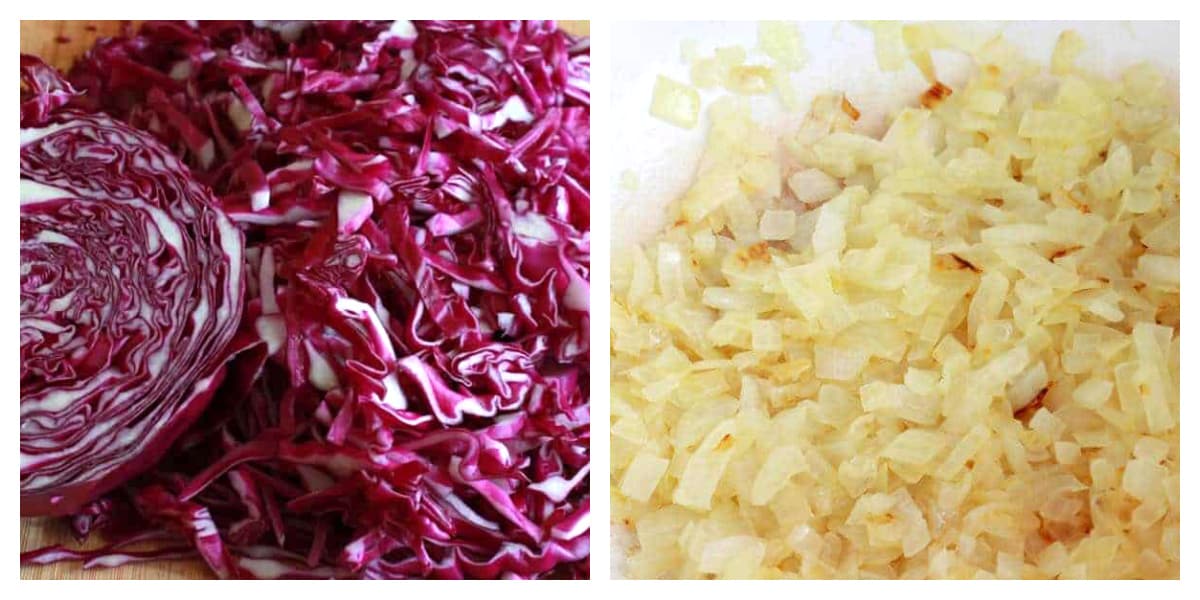
Add the red cabbage and cook for 5 minutes.
Add the diced apple along with the broth, bay leaf, whole cloves, juniper berries, red wine vinegar, sugar and salt. Bring to a boil, reduce the heat to low, cover and simmer for 2 hours, stirring occasionally. Add more broth if needed. Mix a tablespoon of flour with 2 tablespoons of water until dissolved and stir it into the cabbage. Add salt, sugar and vinegar to taste.
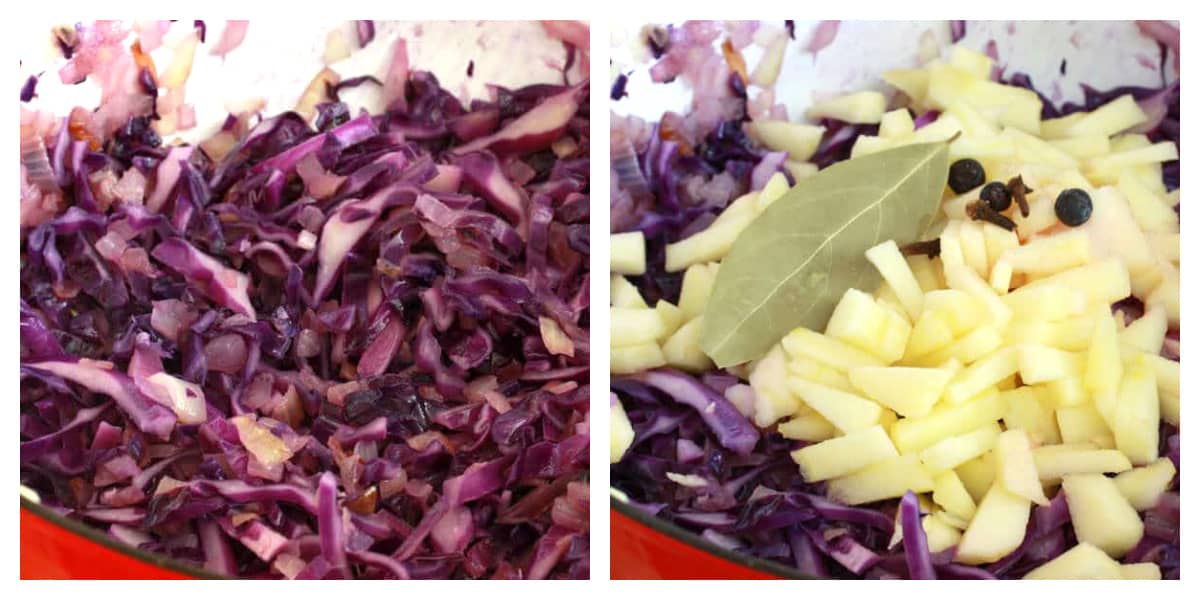
Enjoy!
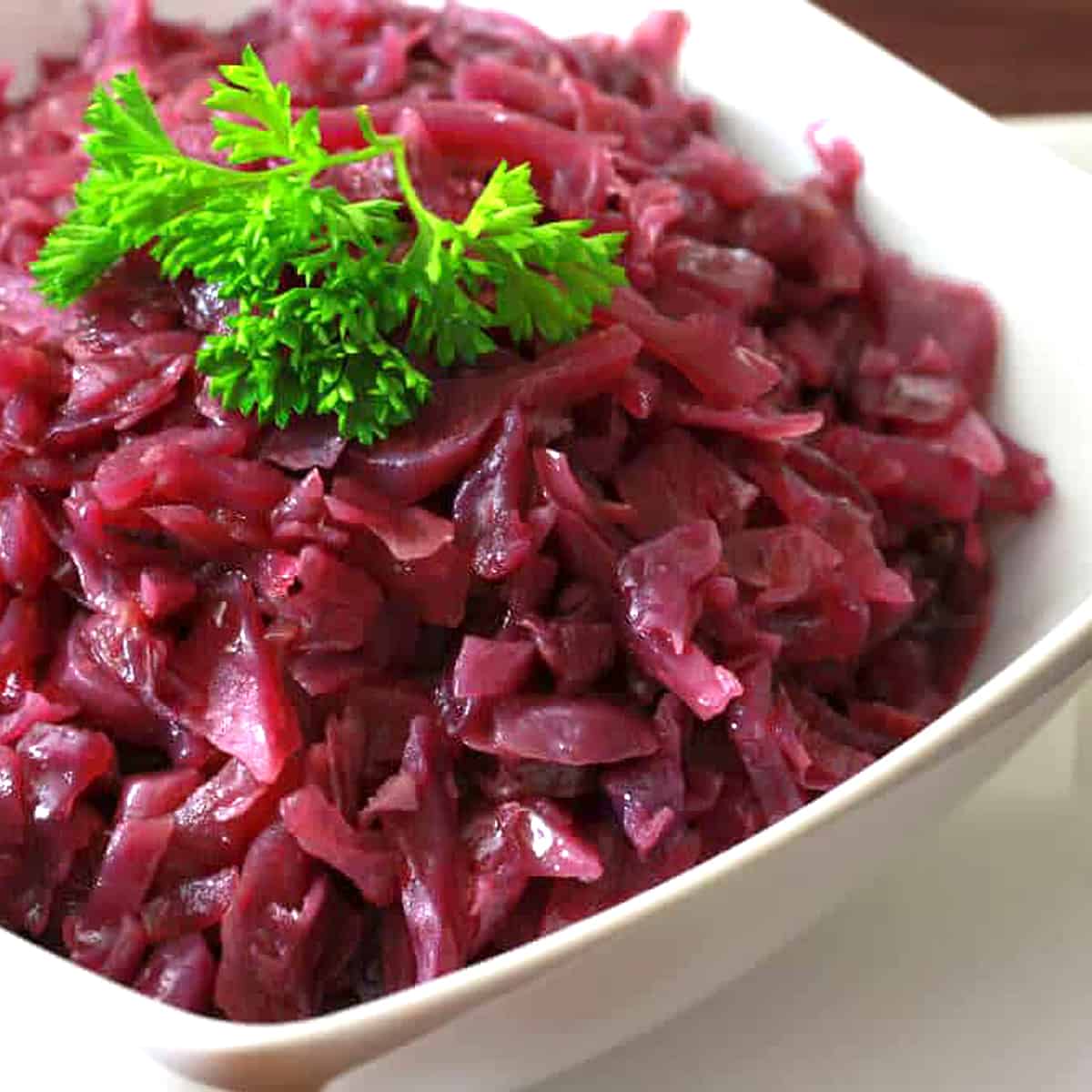
Serving Suggestions
In Germany, Rotkohl is the quintessential side to serve with roasts and a variety of meat dishes along with a carb of choice. Here are few dishes you’ll commonly see served with Rotkohl in Germany:
- Sauerbraten
- Rouladen
- German Goulash
- Schweinshaxe
- Spätzle
- Bread Dumplings (Semmelknödel)
- German Potato Dumplings (Kartoffelklöße)
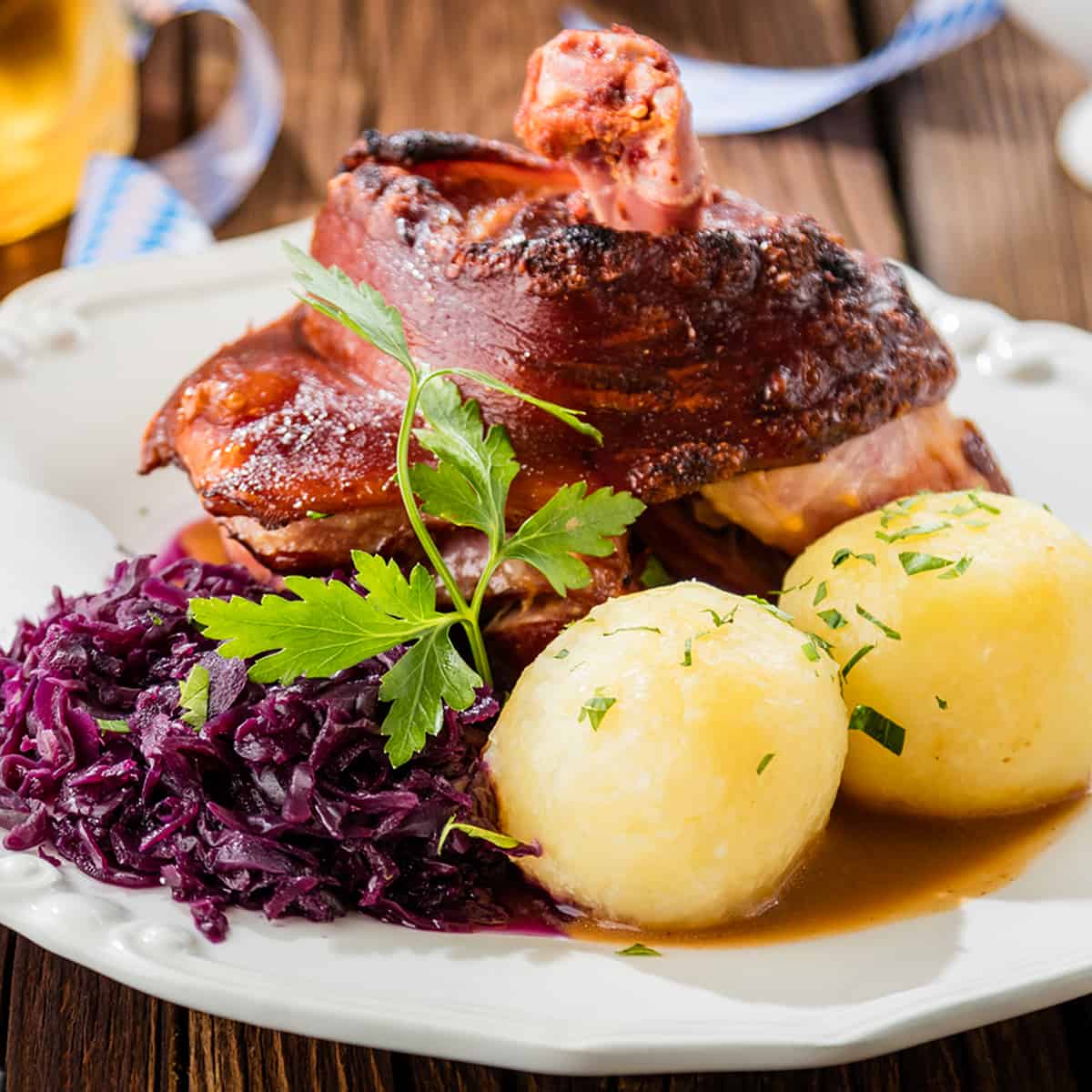
For more traditional German dishes be sure to try my:
- Spätzle
- Käsespätzle
- Rouladen
- Sauerbraten
- German Goulash
- Schweinshaxe
- Maultaschen
- Schnitzel
- Königsberger Klopse
- German Potato Dumplings (Kartoffelklöße)
- Bread Dumplings (Semmelknödel)
- Zwiebelkuchen
- German Bread (Vollkornbrot)
- Bratwurst
- Currywurst
- Swabian Potato Salad
Save This Recipe
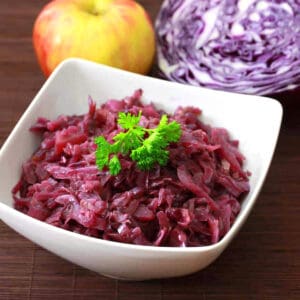
Rotkohl (German Red Cabbage)
Ingredients
- 1 1/2 pounds red cabbage , very thinly sliced
- 1 large yellow onion , finely diced
- 1 large Granny Smith or other semi-tart apple , peeled, cored and diced
- 1/4 cup butter (vegan: substitute oil)
- 2 tablespoons red currant jam or jelly , this is traditional but can substitute cherry jam
- 2-3 tablespoons red wine vinegar
- 1/2 cup vegetable broth
- 1 bay leaf
- 3 whole cloves
- 3 juniper berries
- 1 teaspoon sugar
- 1 teaspoon salt
- 1 tablespoons all-purpose flour (gluten free: omit)
- 2 tablespoons water
Instructions
- Melt the butter in a Dutch oven over medium-high heat and cook the onions until just beginning to brown, 7-10 minutes. Add the cabbage and cook for 5 minutes. Add the apple, broth, bay leaf, cloves, juniper berries, red currant jam, red wine vinegar, sugar and salt. Bring to a boil, reduce the heat to low, cover and simmer for 2 hours, stirring occasionally. Add more broth if needed. Combine the flour and water until dissolved and stir into the Rotkohl. Simmer for another minute. Add more salt, sugar and vinegar to taste.
- Traditionally served with roasts, Rouladen, and Sauerbraten along with potatoes, Spaetzle, German Potato Dumplings, or German Bread Dumplings.
Nutrition
Originally published on The Daring Gourmet July 23, 2014



















Weak in flavor. followed to the letter. not as impressive as the cookies are. Ive had much better.
Hi Kimberley
Would the Rotkohl taste as good if it is made the day before and reheated at dinner time?
Thanks – Tom
I am preparing an authentic German dinner for my elderly parents for Christmas Eve. Beef Rouladen with home made Speatzle and Red Cabbage. I was very impressed with all the positive comments for this recipe. I am finding it difficult to purchase juniper berries at my local supermarket. If I used bay leaves, how many?
Merry Christmas!
Hi Joanne, you can simply omit the juniper berries, no substitutions necessary, and it will still taste marvelous! Merry Christmas!
Do you think you could use prepackage coleslaw. I don’t want to use red cabbage since have kids and dinner will be served on light carpet
Thanks
Hi DoT, I’m all for ingenuity but you really need red cabbage for this, green cabbage will yield an entirely different result (and not a very good one at that).
a big hit!
turned out great.
couldn’t find re current jam so used cherry as suggested-yum
I’m so glad to hear that, Bill, thank you very much!
Love this recipe came out delicious!!
I’m so glad, Suzanne, thank you very much!
For a gluten-free version, try substituting rice flour for the regular flour instead of omitting it. I actually think rice flour makes a BETTER white sauce/bêchamel, so it should work fine here.